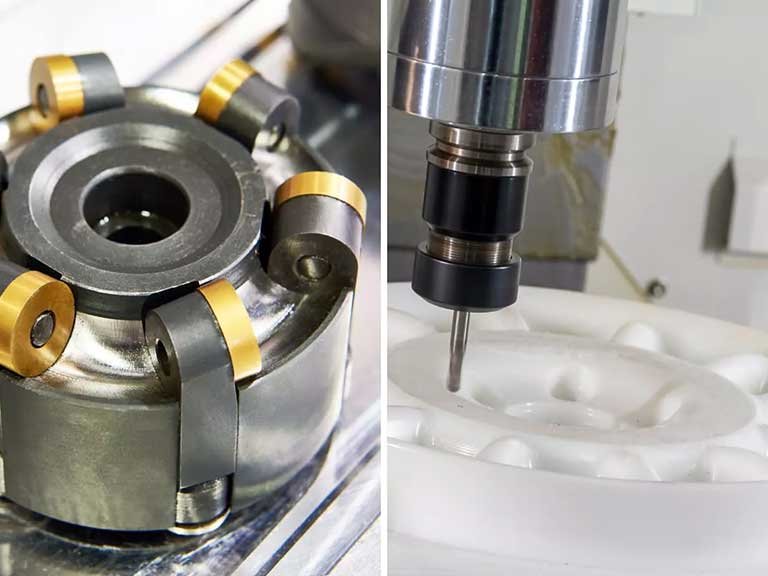In the field of mechanical processing, milling is a basic process that uses a rotating tool to remove material from a workpiece. End milling and face milling are two well-known methods for machining metal. The main difference between face milling and end milling is the tool used for each.
Both milling methods have their own special features and are different from each other. This article aims to explain the differences between end milling and face milling, as well as their respective uses, advantages, and disadvantages. This will help you understand their characteristics and determine whether they are suitable for your machining tasks.
Table of Contents
What Is Face Milling?
You can use a shell mill, end mill or fly cutter to perform face milling to obtain a flat surface. These face mills have a variety of different cutting heads, so they are very easy to change. When machining, the material to be cut is positioned so that it is perpendicular to the cutting line of the tool. After the material to be machined is fixed in place, the feed rate and spindle speed are adjusted appropriately, and then the material is cut.
With face milling, you can remove large amounts of material more quickly. However, the surface finish of the machined part is only of a medium quality. Face milling can also be used to machine metals such as titanium, brass, aluminium and steel. It can be used to flatten raised edges and surfaces, create grooves and produce surfaces that are parallel to each other. Large diameter tools such as ball nose, chamfer and fillister cutters are often used for face milling.
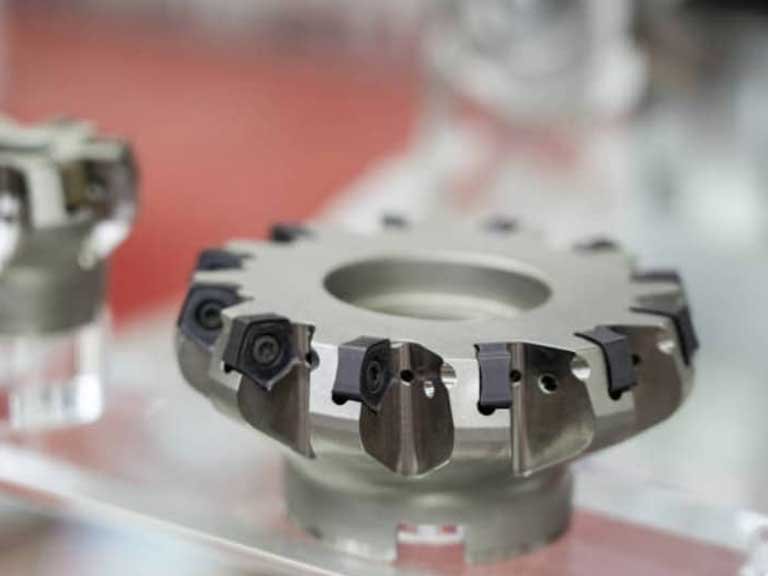
What Is End Milling?
End milling gives you more freedom and can be used to create cavities, shoulders, slots, pockets, and contours. The workpiece remains parallel to the tool spindle during machining. It also uses tools with cutting edges on the sides and end faces (flat parts) to remove material.
It also has a special design that allows it to perform other tasks. For example, cutting different shapes, creating cavities, engraving, contouring, etc. In the preparatory phase, end milling and face milling are similar. For end milling, you need to ensure that the machine is set up correctly and the material is in the best position for cutting.
This method allows you to cut vertically and axially and is used for contouring, grooving, keyways, reaming, and profiling. The surface finish achieved with end milling is not as good as with face milling and is usually between 0.29 and 0.95 microns. To complete this process, you need a machine tool, such as
- Ball Nose End Mill: Used in cutting the contoured surfaces in molds and dies
- Square or Flat-end Mills: They perform the usual end milling tasks.
- Corner Rounding End Mill: This is used to cut round edges
- Tapered End Mill: Specially for cutting materials utilizing a mold or a die
- Corner Radius End Mill: Help to cut corner radii
- Keyway End Mill: used to cut keyway slots
- Drill Mill: Made for chamfering, spotting, drilling, and countersinking
- Roughing End Mill: Helps to remove large amounts of material. However, it often results in a rough surface.
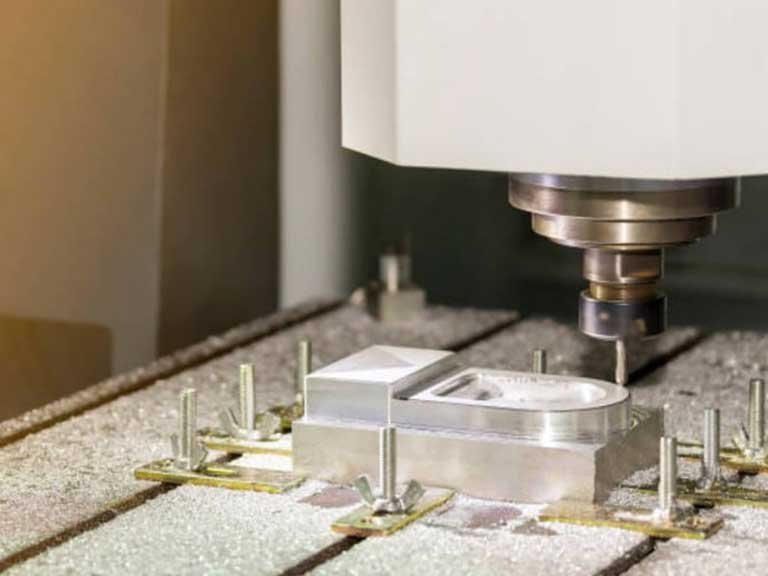
The 5 Main Differences Between Face and End Milling
This section will discuss the main differences between face and end milling. We will examine the cutting direction and tool use, surface finish, use of different materials, cutting depth, and tool types and geometries.
Cutting Direction and Tool Use
Face milling requires a vertical distance between the cutting edge and the workpiece surface. In the case of end milling, on the other hand, the cutting edge is usually located on the side and end face of the tool. Face milling cutters, on the other hand, usually have many cutting edges and a larger width, which allows them to machine larger amounts of material. End milling cutters machine less material because they are smaller in diameter.
Surface Finish
Face milling is a better and faster machining process for large workpieces. This design allows it to come into more frequent contact with the workpiece surface, resulting in a smoother surface. You can also use both conventional and scraper blades to achieve a better surface finish on the part.
In addition, end mills can complete the machining of complex shapes and contours. Because they are very flexible, they can achieve excellent surface finishes even in tricky places.
Use and Suitability for Different Materials
Face milling is an efficient way to produce flat, large surfaces, vertical features and ensure that workpieces meet milling requirements. It can also be used on different metals such as aluminum, titanium, steel and brass. Face milling projects can also be used to create grooves as well as parallel and horizontal surfaces.
When using an end mill, it helps you to precisely create holes, contours, grooves and shapes. It can be used for roughing and finishing. It is also suitable for delicate cutting work that requires precise features. What’s more, end milling can be used to mill a variety of materials, such as composites, metals and non-metals.
Tool Types and Their Shapes
Face milling requires the use of face mills, which smooth the surface of the workpiece. End milling, on the other hand, mainly uses end mills, which come in a variety of shapes and sizes. Examples include corner radius end mills, ball nose end mills, and square end mills.
Face milling cutters have a large number of cutting edges and a large diameter, so they can machine large surface areas in a single pass. End mills, on the other hand, are smaller in size and can be used for precise copying, grooving, and slotting.
Cutting Depth
End milling and face milling require different cutting depths, depending on the requirements of the machining process. You can vary the cutting depth based on parameters such as the type of material, the performance of the machine and the surface finish.
Ready to get started on your next project? Get a personalized estimate for your parts machining needs.
How to End Milling and Face Milling Work Together
Milling processes such as face milling and end milling are well known, but they serve different purposes. To be fair, they can work together in CNC machining, prototyping, and special parts machining.
Face and End Milling Working Together in Machining
Face and end milling differ in many ways, but they can be used together in the same machine setup. Here are some ways:
Face milling is a method of removing large amounts of material from a flat work area. This process is a good way to create grooves and holes as well as parallel and horizontal surfaces.
End milling, on the other hand, helps to improve precision and practicality. It is therefore suitable for small parts and complex shapes with fine details. Compared to face milling, end milling uses less material. It is therefore more precise and easier to manage.
Prototyping and Custom Part Manufacturing
For custom part and rapid manufacturing, face milling is an excellent method for machining high-quality flat areas. To do this, ensure that the workpiece is securely fixed to the machine table and is perpendicular to the tool axis. This prevents the workpiece from moving.
Also, make sure that the feed rate and spindle speed are set correctly so that the cut is made in the right place. In addition, the cut should be made automatically by computer numerical control. The surface and tool should remain cool until the chips have been removed.
On the other hand, end mills are very good for creating contours, grooves, and complex shapes with many details. When developing, you should consider the type of end mill, as each type is used for different tasks. Examples include square-end mills, V-shaped end mills, ball-end mills, etc.
It is also important to consider the number of cutting edges. End mills have two to four cutting edges. The more cutting edges, the faster the feed rate and the better the surface finish. The fewer cutting edges, the less heat is generated. In addition, end mills can also be used to create grooves.
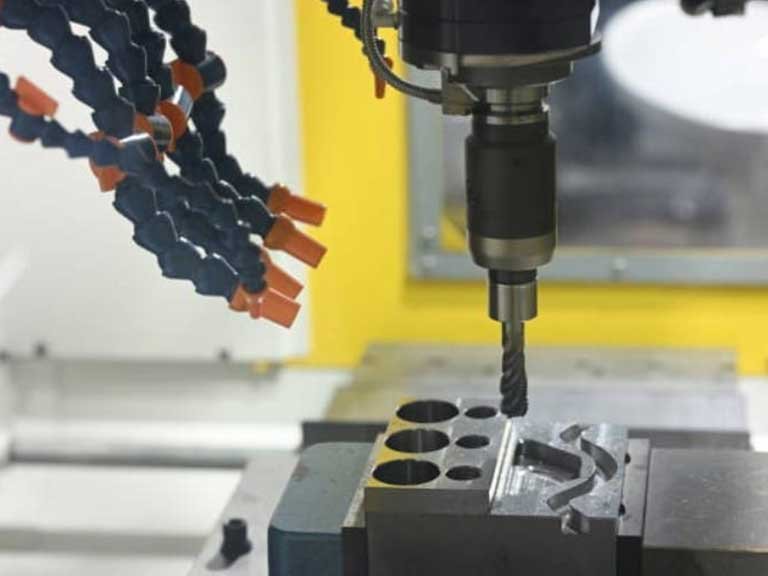
Different Uses of End Milling and Face Milling
Both milling processes can be used to machine parts in different industries. However, they are used differently when machining specific parts.
Face Milling in Different Industries
- Aerospace Industry: parts of aircraft wings, where precise, smooth areas can be machined.
- Automotive Industry: Machining cylinder heads and engine parts.
- Heavy Machinery and Equipment: Used to smooth rough areas, such as machine bases and structural components.
- Tool and Mold Making: It can be used to design and manufacture mold prototypes.
End Milling in Different Industries
- Aerospace Industry: Aircraft components such as engines, turbine blades, and structural parts.
- Automotive Industry: It can be used to manufacture complex parts such as frames and gears. In addition, it can cut the shape of the interior and exterior of the car and engrave text on car parts.
- Mold Making: End milling can be used to make molds and other tools.
- Electronics Industry: It can be used to shape the final shape of different parts.
- Medical Device Manufacturing: Manufacture precision parts for medical devices such as implants, prostheses, and surgical tools.
- Consumer Electronics: It helps to create the external shape of parts through contour milling, engraving, detail machining, cutting, and drilling.
Advantages and Disadvantages of Face Milling
Advantages of Face Milling
High Material Removal Rate: Face milling can remove large amounts of material from the top of the workpiece. By removing material quickly, production times can be reduced and costs can be lowered. This is also a good method for mass production of mechanical parts.
A Smoother Surface with a Higher Finish: Compared to end milling, face milling helps you achieve a flat, even surface. Face milling uses a tool that can cut a large area in a single pass. In addition, choosing the right tool can help you achieve the desired smooth surface. This means that face milling is ideal for applications where appearance is important. It can produce a fine, even surface.
Can Machine Large Workpieces: Face milling is a good choice for machining large metal workpieces with multiple cutting edges. This machining method can cut large workpieces while maintaining a smooth surface on both sides of the workpiece.
Fast Cutting: Face milling cutters have multiple sharp cutting edges. Therefore, it can quickly cut a large amount of material.
Ability to Vary the Depth of Cut: You can vary the depth of cut of face milling as required. It can therefore be used to machine a wide range of materials such as metal, plastic, wood and even composites. Thanks to its excellent flexibility, face milling can be used for a wide range of different applications.

Disadvantages of Face Milling
Expensive Tools: Face milling cutters for high-speed machining are very expensive in most cases. Due to the high cost of the tools, face milling is not suitable for small-scale production. Face milling cutters with replaceable inserts can help you save costs. However, they can be very expensive initially, especially for complex projects.
Only for Flat Workpieces: Face milling is the best method for creating very flat, smooth surfaces. This cutting method is not suitable for complex shapes. It can therefore only be used in specific cases. For applications that require complex cuts or machining of non-flat areas, end milling is the best method for making such cuts.
Advantages and Disadvantages of End Milling
Advantages of End Milling
High Precision: End milling allows precise cutting work to be carried out. During the cutting process, material is removed from the workpiece while ensuring that the shape of the workpiece is exactly as required. With end milling, you can precisely create specific shapes, surfaces, and curves. It is therefore best suited to situations where high standards are required.
Capable of Machining Complex Shapes: End milling is best suited to machining complex shapes. This is because it can cut in multiple ways at the same time. It can also machine complex shapes, recesses, grooves and many holes of different sizes. Contour cutting, complex 3D machining and profiling are all common applications of this process.
Machining internal features: This is another important aspect that distinguishes end milling from other cutting methods. Other machining methods may not be able to machine internal features as easily as end milling.
Versatile: End milling is used in many different areas. This is because it can be used to perform many different types of cutting. For example, end milling is used to manufacture surgical instruments, dental prostheses, and other medical gadgets. You can also use this machining method to manufacture molds, various tools, and furniture with complex designs. In addition, it can cut wood, plastic, metal, and even composite materials.
Suitable for Small-batch Production: This is an economical machining process, which is particularly suitable for small batch production. As end milling is automatic, it speeds up the production process. Manufacturers can machine parts in just a few hours using end mills. End milling is very useful in prototyping and production. It allows manufacturers to move from the trial stage to medium-scale production.
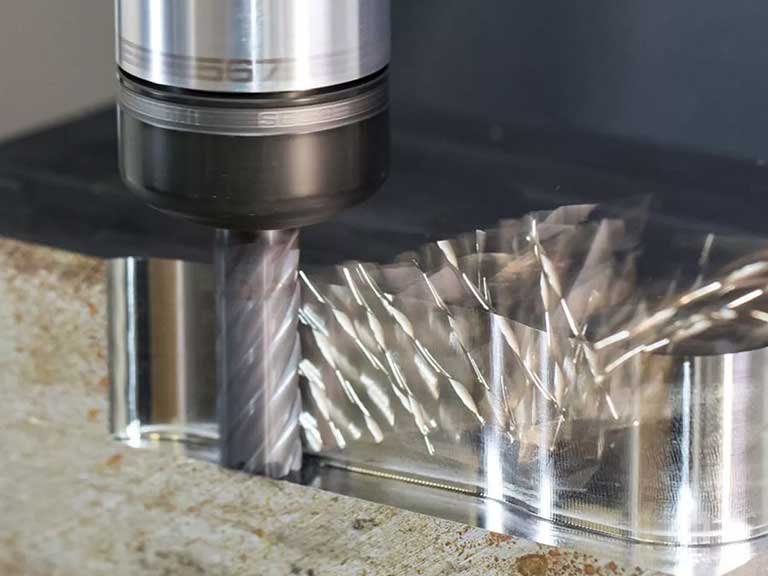
Disadvantages of End Milling
Tool Deflection: A major problem is that end mills wear quickly and tend to deflect. This is particularly the case when machining hard materials. This leads to rapid tool damage and increased production costs.
Not Suitable for Machining Large Surfaces: Due to the orientation of the cutting edge, end milling is not very effective on large, flat surfaces. Face milling is therefore the best choice for machining large surfaces.
How to Choose the Best Method for Your Project?
Choosing the best machining method for your project depends on many factors. Some of these factors include the specific requirements of the job, the type of material being machined, the complexity of the design, and the desired surface finish. Although each machining method has its own advantages, it is important to know the differences in how they work.
Many people choose face milling when they need to quickly machine large quantities of flat material. This machining method is also very suitable for machining large quantities of workpieces, especially flat areas.
However, if you need to precisely machine complex patterns, end milling is the best choice. End milling is very flexible and can be used for horizontal and vertical milling. Therefore, the machining method you choose depends on the type of machine you want to use.
In addition, when deciding between face milling and end milling, you also need to consider the costs and efficiency. End milling can complete complex cutting and forming, so it is a cost-effective option. In addition, end milling can also complete other operations such as grooving, grooving and forming, so it is very practical.
On the other hand, the cost of the tool can make face milling very expensive. It is therefore not the best choice for small-scale production. The most suitable machining process for your project depends on the size of the project and the results you want to achieve.

Summary
We hope this helps you understand the difference between face and end mills. Yonglihao Machinery can perform a variety of different manufacturing. We can provide milling services for production and prototyping. If you would like more information about end mills and face mills. Please contact our representative today for a free quote.
FAQ
What Is the Difference Between an End Mill and a Face Mill?
End mills and face mills differ in the number of cutting edges, the direction of the cutting edges, the diameter and the purpose. Face mills have many cutting edges and a large diameter. End mills have fewer cutting edges and a smaller diameter. Face mills can therefore cover a large area with just one cut.
On the other hand, the cutting edges of a face mill are perpendicular to the workpiece surface. The cutting edges of an end mill are located on its face and sides. Face milling is suitable for machining large flat surfaces, while end milling is good at creating grooves and precise holes.
What Is the Difference Between Face Milling and Side Milling?
Face milling and side milling are two different milling processes. They differ in terms of the operation and positioning of the milling cutter. When face milling, you need to ensure that the milling cutter is perpendicular to the workpiece. In this method, the milling work is only done by the top of the face milling cutter. Therefore, they can be used in situations where a smooth surface is required.
Side milling, on the other hand, uses the side edge to cut areas that are perpendicular or at an angle to the work surface. This method provides precise direction by ensuring that the tool’s rotation line is perpendicular to the surface. Side milling is the best machining method for creating flat areas on the workpiece.
What Is the Difference Between End Milling and Slab Milling?
Although both end milling and slab milling are machining processes, they are used for different purposes and have different cutting edges and working methods.
Slab milling is usually used to remove large amounts of material. The machined surface is placed at the edge of the tool aligned with the cutting edge. This cutting method is the best choice when very precise finishing is required.
On the other hand, end milling is more flexible than slab milling when it comes to creating complex shapes. This is because it can create holes, grooves, cavities, and contours. In machining, a cutting tool is used to cut axially into the workpiece. An end mill has cutting teeth on all four sides, with more on the tip.
Can You Face Mill an End Mill?
Yes, you can face a mill with an end mill. The reason is that an end mill can do the work of a face mill. On the other hand, a face mill cannot do the work of an end mill. A face mill can only cut surfaces, while an end mill can drill holes and grooves.
In addition, end mills are more versatile and can be used for a wider range of applications. They can not only cut but also engrave, drill, and copy contours. Both end mills and face mills can cut the workpiece material, but the former is more versatile and the latter is more suitable for flat areas. Face mills can sand the workpiece surface more precisely than end mills.

